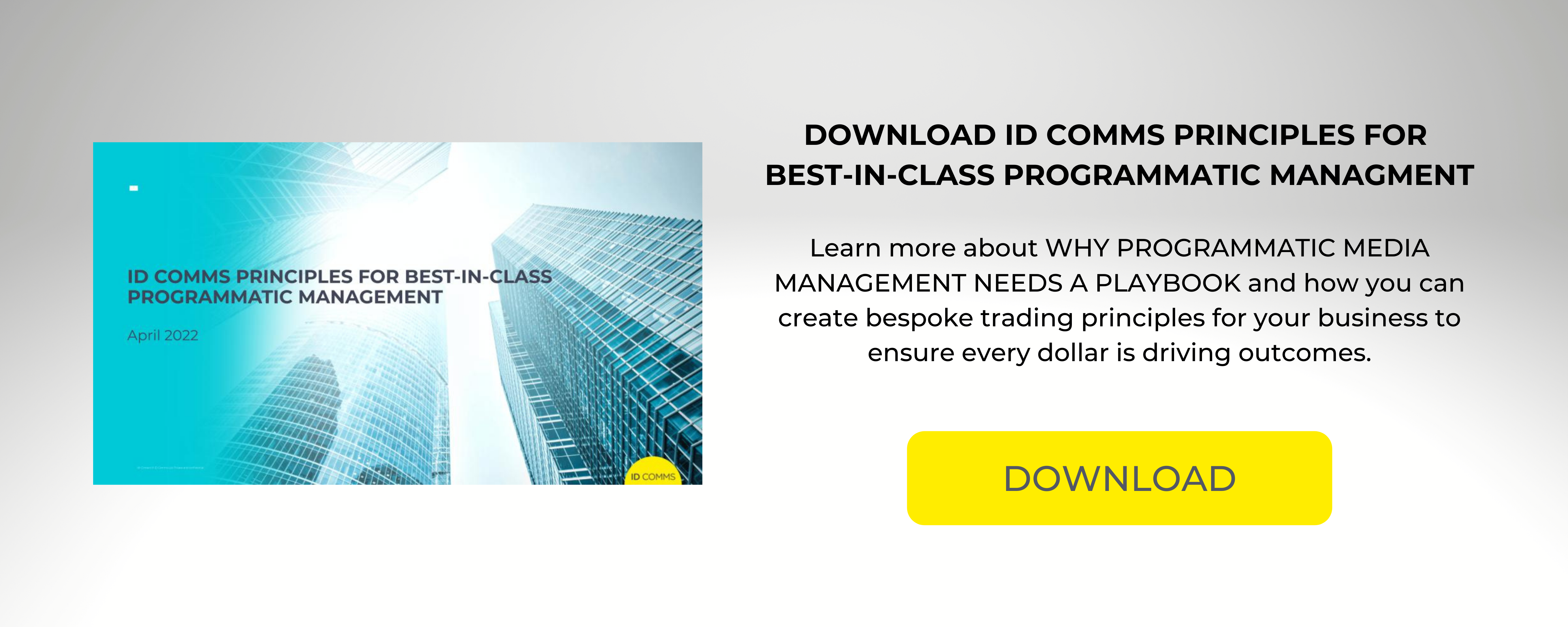Programmatic media planning and buying is a different beast to traditional media planning and buying. Fueled by data, and enabled through technology, the possibilities are unlimited. True and lasting competitive advantage doesn’t come from price, but from high productivity and marginal gains.
There is no single trick, but there are endless opportunities to win.
Sir Dave Brailsford revolutionized British Cycling by applying the theory of marginal gains. He believed that making 1% improvement in numerous areas would result in a cumulative advantage. He was not wrong.
His “microexcellence” approach propelled the British Cycling team from at best mediocre (one gold medal in nearly 100 years) to record breaking (60% of gold medals in Beijing and nine medals and seven world records at the London olympics) in only 5 years.
Through making small improvements - finding the best pillow for a good night's sleep, painting the floor of the team truck white to spot dust that could impair bike maintenance - he created a culture of continuous incremental growth. Every member of the team started looking for any small area to make improvements. In doing so, productivity improved and they became winners.
Winning in programmatic requires the same principles. By finding 1% improvement in numerous areas, advertisers can create advantage, and there are countless opportunities to do so.
So how can advertisers build a culture of continuous incremental improvement in programmatic?
1. Build analytical capabilities to spot tactical opportunities.
Smart strategy is important. As with any other channel, you should always start with the role of the channel in helping you achieve your marketing goals. But tactics are just as important and these are too often overlooked by advertisers.
Activation tactics can be deployed proactively, based on industry recognized best practice, or reactively, guided by momentary opportunities, data-driven insights or test outcomes. This is a new job spec for a lot of advertisers. To spot tactical opportunities, you need talent with strong analytical capabilities, a mastery of platforms and excellent strategic thinking skills.
At the start of the pandemic, advertisers and verification platforms nearly all added coronavirus to their blocklists as it was considered non-brand safe. The result was that the Wall Street Journal, while seeing increased viewership as a result of interest in Covid-19, ran without ads for a time. This was a momentary opportunity that was missed for advertisers to generate high quality, efficient reach while demand was low. Decisions like this have to be taken quickly by traders and platform algorithms. Hence, when it comes to programmatic media investment, it is important to pre-align your risk appetite.
Reacting to data-driven insightsand test outcomes is more methodical. Advertisers need to be analytical and have strong oversight of data to deploy tactics quickly, in order to capitalize on opportunities and achieve incremental gains.
2. Design a testing framework to ensure actionable results.
A testing framework is fundamental to support incremental growth in an efficient and effective manner. With infinite testing possibilities in programmatic, it aligns stakeholders on priorities and a structured approach to testing.
A testing framework defines test objectives (the hypothesis) and the methodology to ensure results are able to prove or disprove the theory and be immediately actionable. This often requires changing only one variable at a time. Common approaches to isolate one test variable include A/B testing, control versus exposed and geographic splits.
For example, for advertisers grappling with the targeting tactics to deploy in a cookieless future, a test hypothesis might be to prove that contextual targeting can be just as effective as audience targeting using third party cookies. The methodology would need to select a similar audience to test using both tactics and control all other variables to ensure they do not influence results; budget, timeframe, creative, geo etc. Statistically significant data thresholds need to be determined to ensure results are reliable. Once this is aligned the test can be executed and insights generated.
Improvements may be small, but scaling testing will produce marginal gains in numerous areas, creating advertiser advantage.
3. Ensure oversight of granular data.
Advertisers must actively manage tactical deployment through having oversight of all data, tests and results. This includes full access to platforms, regular auditing to identify opportunities and granular reporting.
Data from testing needs to be clean, meaning an independent variable can be extracted, and have sufficient scale. Where this is not the case, advertisers need the ability to quickly course correct methodologies, so data visibility is critical. This often requires specific granular reports, separate from everyday performance reporting. Testing reports should be used to ensure quality control and align stakeholder groups on the testing progress and results. There should be a clear cadence for insight generation, ensuring the test has enough time to run before results are considered.
4. Reward productivity behaviors in a PRIP or an incentive program.
Tactics that give rise to marginal gains can be scaled across campaigns, often without needing to test the hypothesis every time. Take the example above of testing whether contextual targeting outperforms cookie-based audience targeting. If the hypothesis proves to be true in a limited test (mitigating risk), the test can be executed on a broader scale to prove or disprove the hypothesis in different scenarios.
Once concrete conclusions have been made, they can be used to create the business case for change and to reward the roll out of the tactic at scale, either through a PRIP or other incentive program. In this way, advertisers can reward agency productivity and achieve marginal gains at scale.
5. Integrate tactics and insights into the media planning process.
For testing to be effective, it needs to be integrated into the broader media planning process before, during and after media activity runs. This is to ensure reliable results. For instance, the launch of a TV campaign during a programmatic testing period could significantly skew results.
Furthermore, the data and insights available in this channel can have a big impact on wider media planning and business decision making, through generating knowledge and intelligence. How well different audience segments or ad environments perform can tell you a lot about your consumers’ interests, needs and behaviors, informing the digital moments that matter to your business and future campaign strategies.
These tactical insights can also act as a barometer for your brand, helping to identify opportunities to better reach relevant consumers (e.g. partnership opportunities) and to improve product positioning or inform product development.
Building a culture of continuous incremental improvement requires a philosophy of identifying and exploiting ‘mircoexcellence’ opportunities, which when executed properly, becomes a way of working that is contagious across the organization. Often the best way for advertisers to identify these opportunities in programmatic, is to conduct an audit. This establishes quick win activation changes, oversight gaps and accountability improvements for tactical strategies. From an audit, insights and trends can be identified, test opportunities defined and knowledge improved. A culture of continuous incremental improvement is a journey. But those that embark on this journey will be propelled from achieving mediocre results in programmatic to achieving record breaking growth in ROI.







COMMENTS